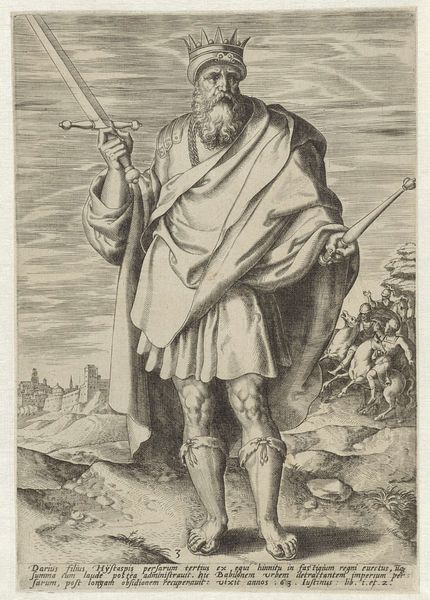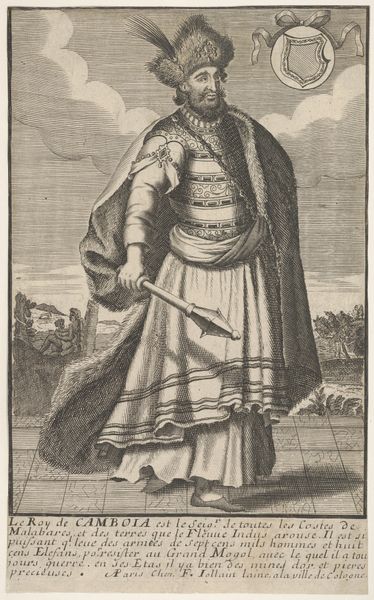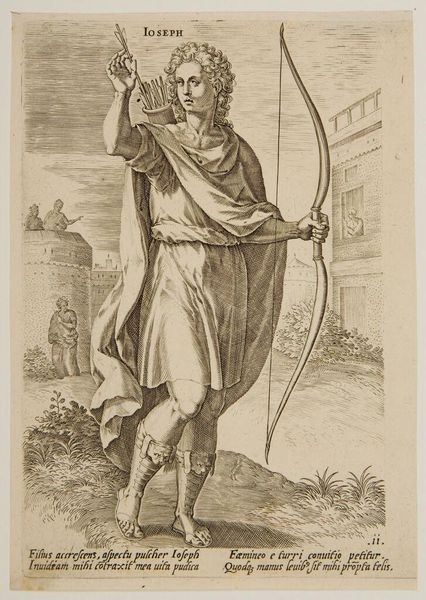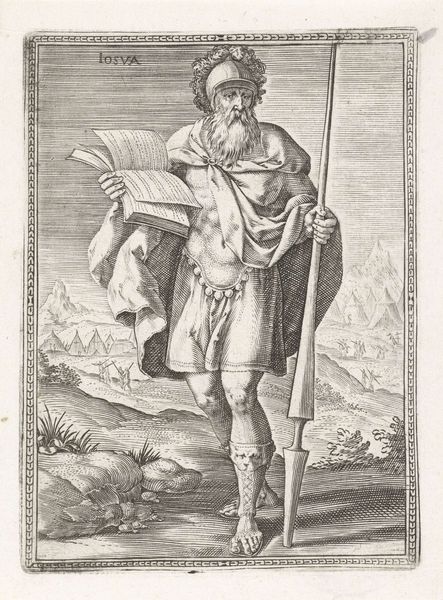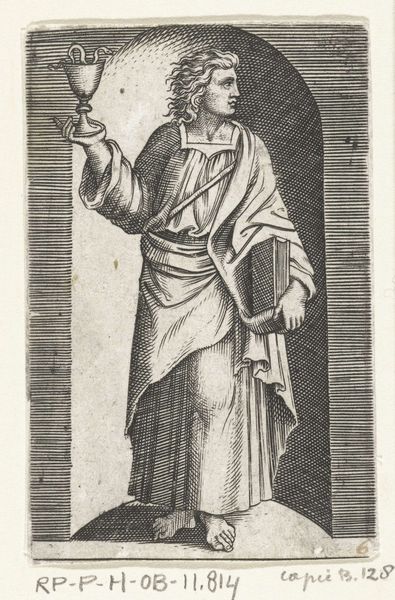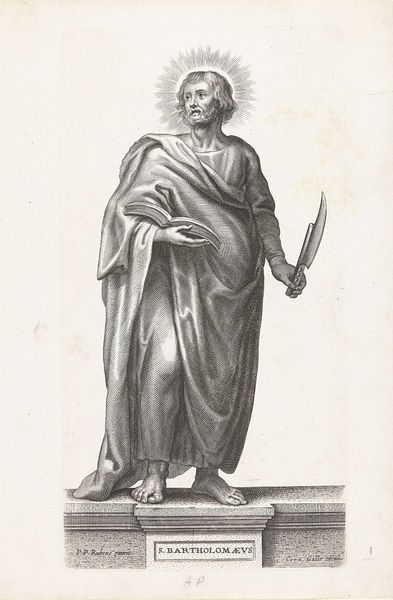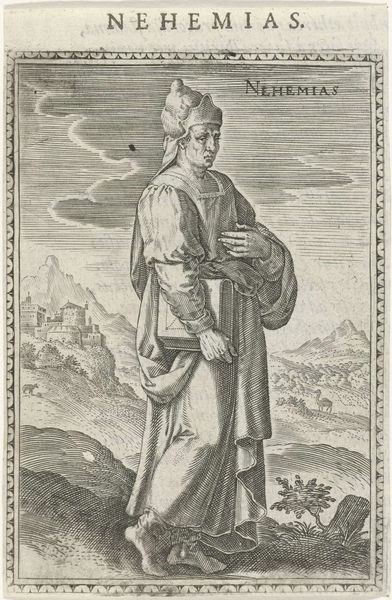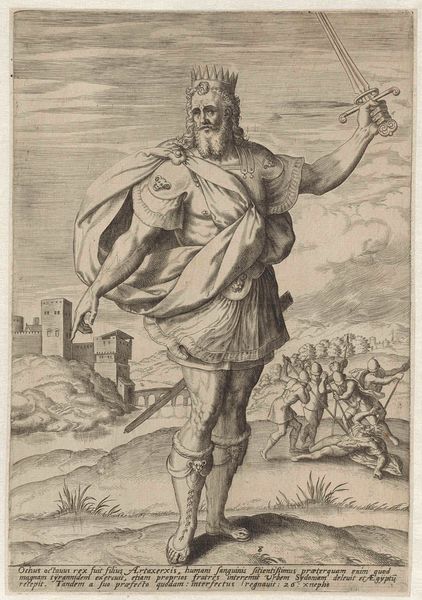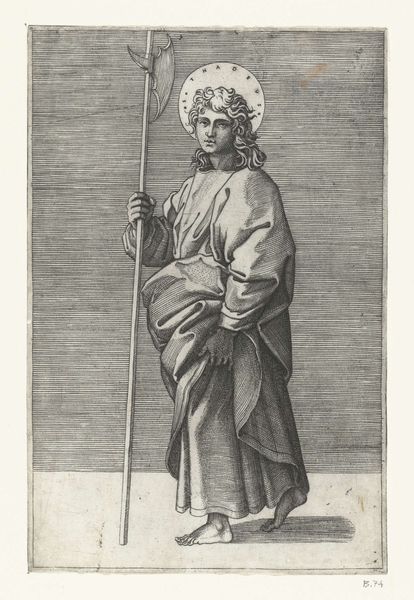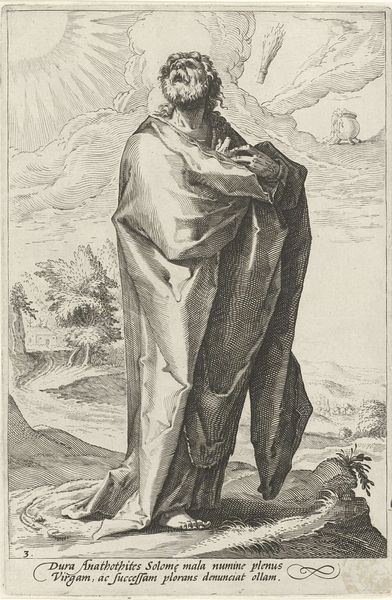
#
pencil drawn
#
facial expression drawing
#
pencil sketch
#
old engraving style
#
caricature
#
cartoon sketch
#
personal sketchbook
#
pen-ink sketch
#
portrait drawing
#
pencil work
Dimensions: height 218 mm, width 119 mm
Copyright: Rijks Museum: Open Domain
Editor: Here we have Wierix's 1579 engraving, "Portret van de astroloog Corstianus G. Overschie," currently residing at the Rijksmuseum. It's a compelling image; the man has such a confident stance. How do you interpret this work? Curator: It's a potent statement, isn't it? Wierix captures Overschie with a very particular visual vocabulary. Notice the palm tree and ducks on his coat of arms - can you see what they might symbolize about his beliefs, social aspirations, or origins? They would have carried immediate weight for viewers of the time. Editor: Possibly longevity for the palm tree? The ducks maybe hint at travel or trade, like a merchant's symbol? Curator: Precisely! Symbols condense meaning. Consider how astrology, though seemingly arcane to some now, was interwoven with medicine, agriculture, even politics in 16th-century life. Overschie holding those gloves; that hat...it's a performance of status through emblematic detail. Do you think this is about personal vanity, or something more profound? Editor: Maybe projecting authority? Or tying himself into some greater universal scheme through astrology? Curator: Indeed. These visual strategies built his perceived influence. Think how potent that was during the Renaissance – placing yourself in harmony with the cosmos for increased agency. He wants to connect to something more durable than daily life, right? Editor: Absolutely. I never really considered the symbolic weight behind these older portraits beyond status alone. It's so much richer! Curator: Indeed! Understanding these recurring visual cues helps us decipher not just the individual, but the mindset of an entire era. The visual languages that we once spoke are worth relearning.
Comments
No comments
Be the first to comment and join the conversation on the ultimate creative platform.
